We consume more news than ever but does that mean that we are better informed?
Every day, we eat up, share and generate stories through news apps, podcasts, Twitter, youtube, facebook updates and even VR. Yet, it seems that the more intimate we get with the creation of information, the less grip we have on its meaning and on the impact its manipulation has on politics and society. The exhibition The New Newsroom. Reporting Redesigned at MU in Eindhoven, explores how we can use the power of digital technology to create meaningful content and regain control of information.
In The New Newsroom, journalists, technologists, artists and designers investigate innovative formats, analyse the news and present their findings in stimulating visuals and installations
The exhibition is packed with emoticons, VR installations, humour, poetry, anecdotes and other weapons of mass distraction. And yet, the more you engage with the art and design works in the show, the clearer the message: the shape of information is evolving faster than ever and we need to probe and question its new guises if we don’t want to remain trapped inside filter bubbles and lose all consciousness of what makes and breaks society.
I didn’t expect to enjoy the exhibition as much as i did! Here’s a quick tour of some of my favourite works:
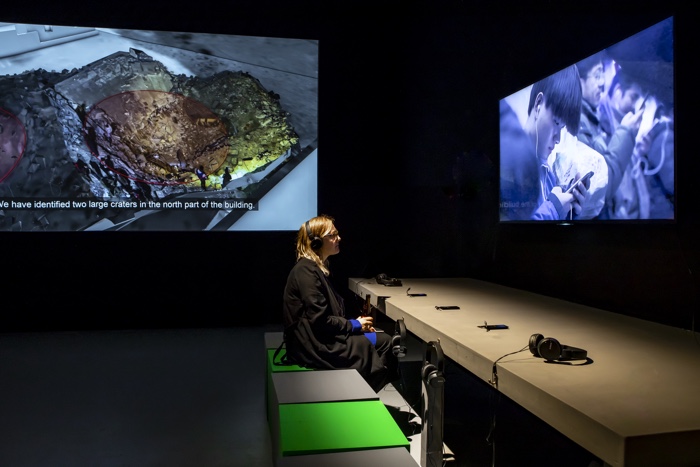
Reporters without Borders, Uncensored Playlist, 2018. The New Newsroom: Reporting Redesigned – MU Eindhoven, 2018. Photo by Hanneke Wetzer
Reporters without Borders, Uncensored Playlist, 2018
China, Vietnam, Uzbekistan, Thailand and Egypt are some of the countries at the bottom of the list for freedom of press. The Uncensored Playlist is the result of a collaboration between Reporters Without Borders Germany and local journalists and musicians to by-pass censorship. They turned censored news stories into songs with innocuous titles that can then be streamed for free via music apps.
Using music as a loophole, the platform aims to get the work of exiled journalists across the border, into people’s playlists. Just like other pop songs, the music spreads through word of mouth, turning news stories into hits.
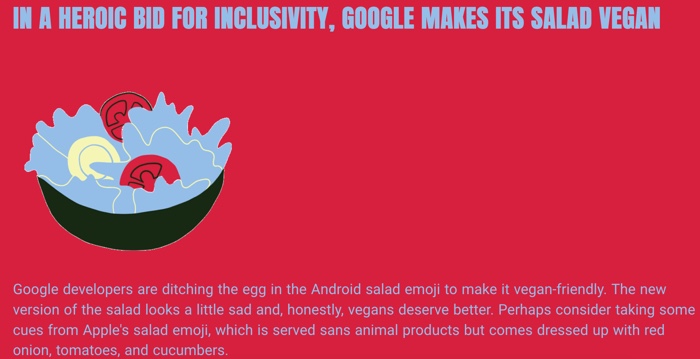
Lilian Stolk, Emoji Newsfeed, 2018

Lilian Stolk, Emoji Newsfeed, 2018
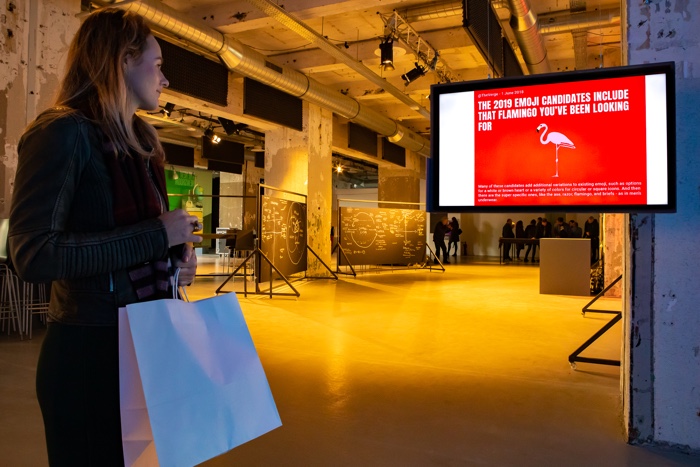
Lilian Stolk, Emoji Newsfeed, 2018. The New Newsroom: Reporting Redesigned – MU Eindhoven, 2018. Photo by Hanneke Wetzer
I had no idea that there are already 3000 emojis for us to chose from. 100 are added every year. The Unicode Consortium determines which icons are added, but news media also plays a role in the pre-selection and modification of the icons. Proposals that meet a large audience in the media, are more likely to be added. Lilian Stolk monitors the development of emoji as she sees the process as a reflection of the choices and changes society is going through. Her colourful and ridiculously interesting Emoji Newsfeed charts the controversies and strange stories surrounding emoji communication.
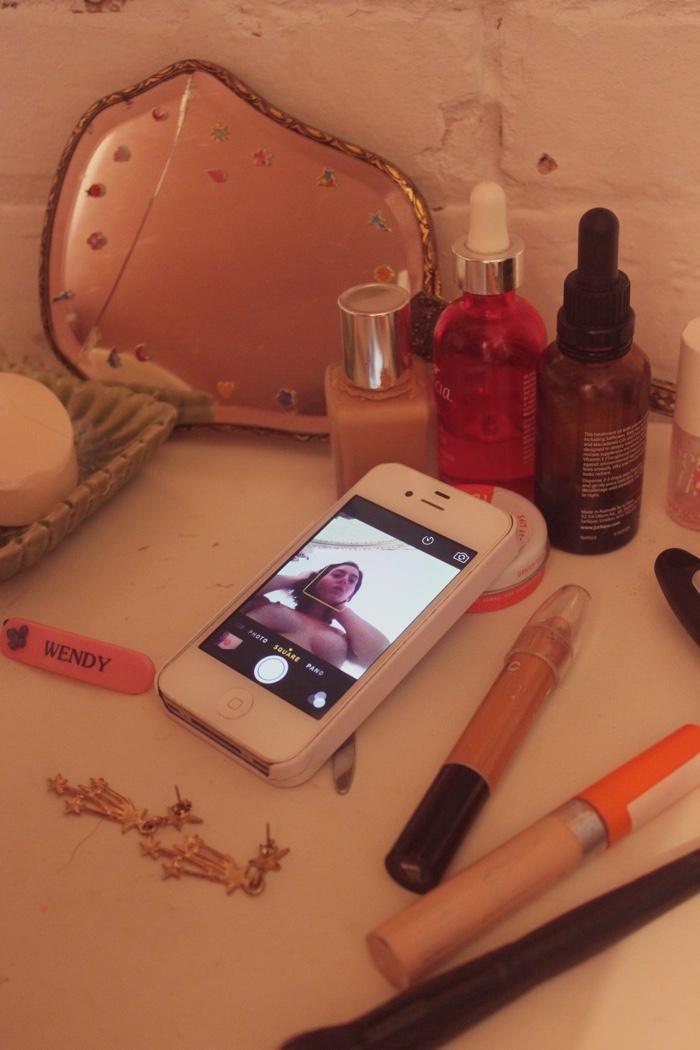
Arvida Byström and Molly Soda, Pics or it Didn’t Happen. Photo: Cassie Brown. Insta: @show_you_mine

Arvida Byström and Molly Soda, Pics or it Didn’t Happen
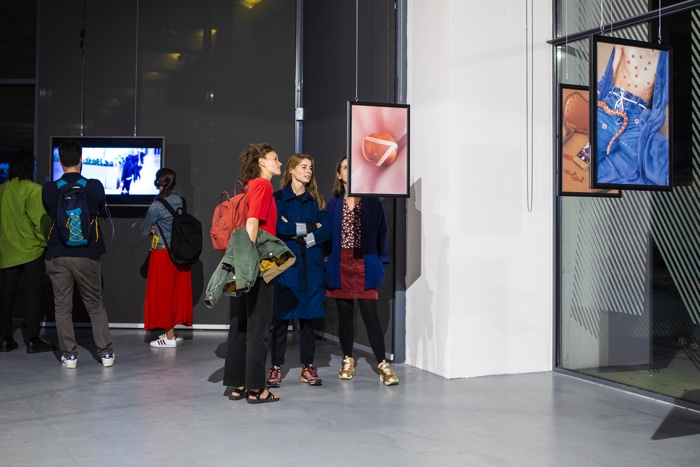
Arvida Byström and Molly Soda, Pics or it Didn’t Happen. The New Newsroom: Reporting Redesigned – MU Eindhoven, 2018. Photo by Hanneke Wetzer
Pics or it Didn’t Happen is an archive of photos banned from Instagram.
Arvida Byström and Molly Soda collected these images -most of them strange rather than offensive- into a book as a guarantee that they would not disappear: “We have to think about how to archive the web,” they told the Independent. “Putting something in a book is an interesting way to take encapsulate something, but also elevating the things that we aren’t supposed to be seeing.”
According to their own analysis, the social platform tends to reject (mostly female) bodies that aren’t young, hairless, lithe, and white. The tendency to favour the standard over what is considered deviant reflects the way society perceives, regulates and suppresses bodies.
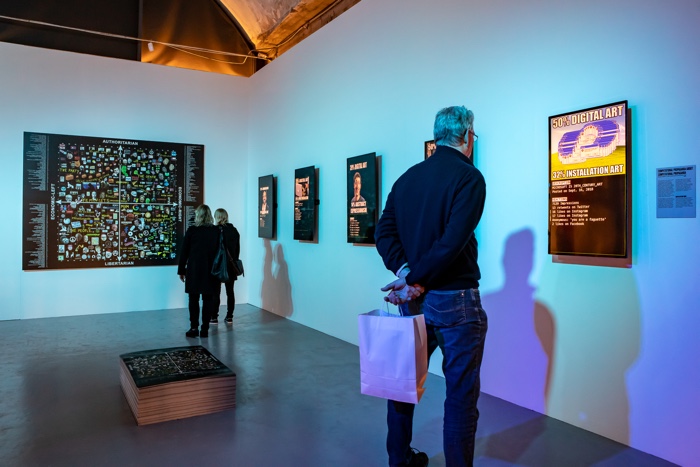
Nicolas Maigret and Maria Roszkowska, Computational Propaganda About Computational Propaganda, 2018. The New Newsroom: Reporting Redesigned – MU Eindhoven, 2018. Photo by Hanneke Wetzer
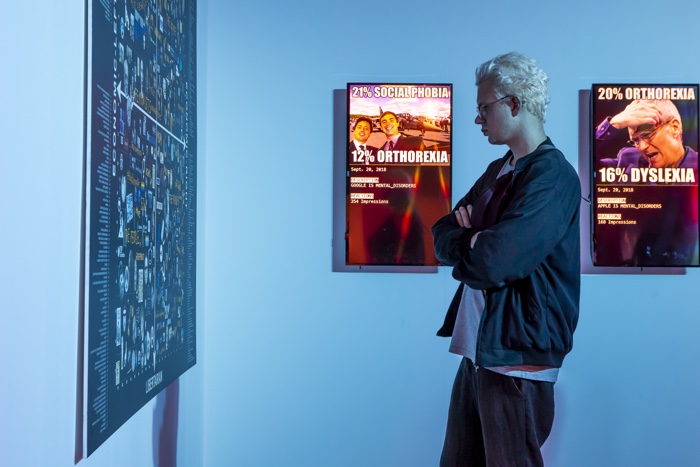
Nicolas Maigret and Maria Roszkowska, Computational Propaganda About Computational Propaganda, 2018. The New Newsroom: Reporting Redesigned – MU Eindhoven, 2018. Photo by Hanneke Wetzer
Nicolas Maigret and Maria Roszkowska‘s Computational Propaganda About Computational Propaganda is a troll campaign that looks at the social and political responsibility of the five Big Tech companies (Google, Amazon, Facebook, Apple and Microsoft).
The troll campaign is executed by a bot that has no political agenda other than stressing the presence of the GAFAM in popular political discourse. “Using Big Data analysis techniques to extract hidden correlations from Wikipedia, the bot is built to spark discussions that link the companies to major social and political issues. The resulting assumptions are spread on social media under the viral form of internet memes. The memes are tracked and recorded, so that their aftereffect can be observed and scrutinized.”
I need to come back with a more detailed story on that one soon!
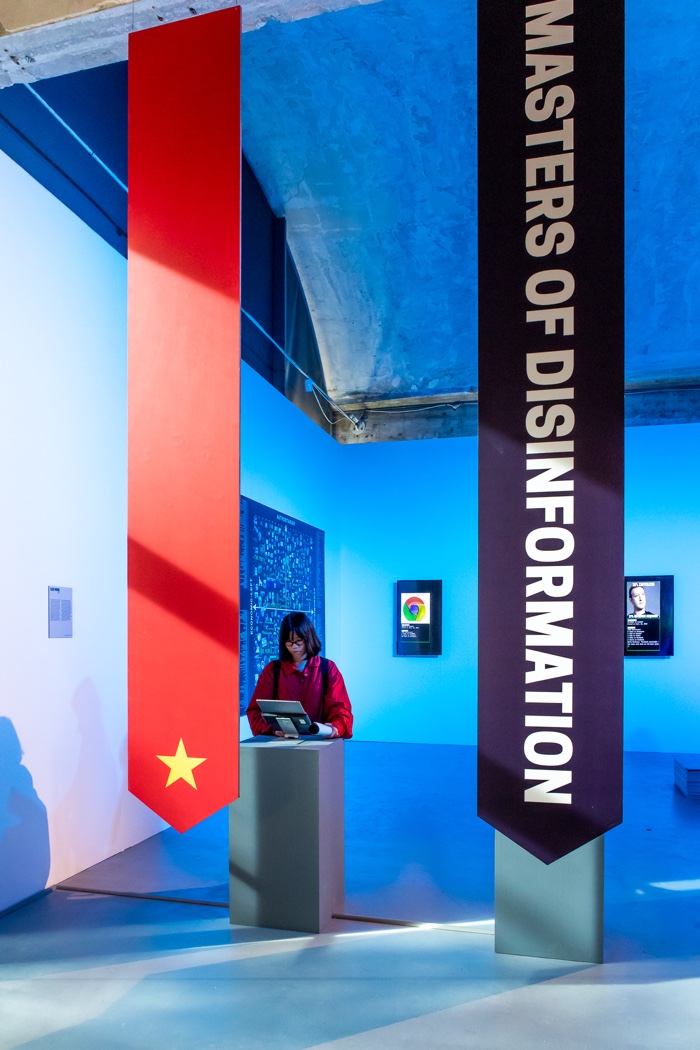
DROG, Slecht Nieuws, 2017
. The New Newsroom: Reporting Redesigned – MU Eindhoven, 2018. Photo by Hanneke Wetzer
The disheartening influence of fake news highlights the need for greater media literacy. Including among adults. Slecht Nieuws (Bad News), a game made by DROG, entices players to fabricate and spread fake news themselves. By learning to recognise the methods involved in the spread of disinformation, players are thus better equipped to distinguish falsehood from truth.
Forensic Architecture, al-Jinah Mosque
In March last year, the U.S. forces bombed a site in Al-Jinah, Syria, claiming that it was a terrorist meeting place and that the only causalities were terrorists.
Forensic Architecture worked with Human Rights Watch and British blogger Bellingcat to analyze numerous videos and images (from both before and after the drone strike) and interviewed survivors, first responders and the building’s contractor to demonstrate that the U.S. had in fact aimed fire at a mosque. Their work revealed the fatal misindentification, the killing of civilians and a possible cover-up by U.S. forces. After making the information public, the Pentagon eventually retracted part of their statement and confessed the target was indeed, “part of a mosque complex.”
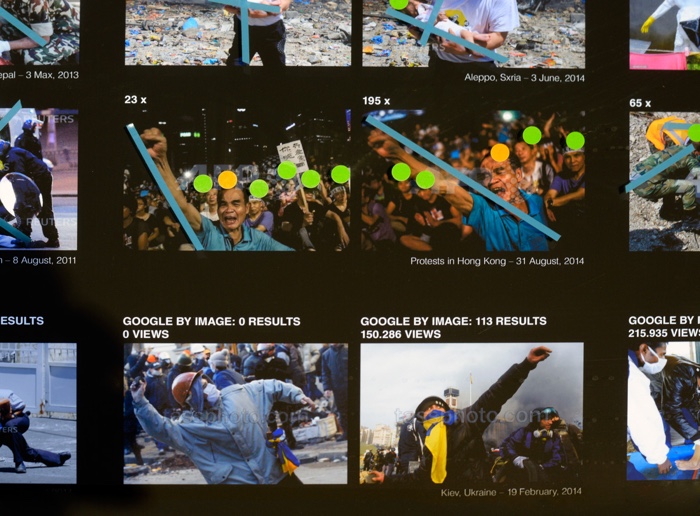
Coralie Vogelaar, Looking for a Possible Algorithm for the Popular News Image, 2016
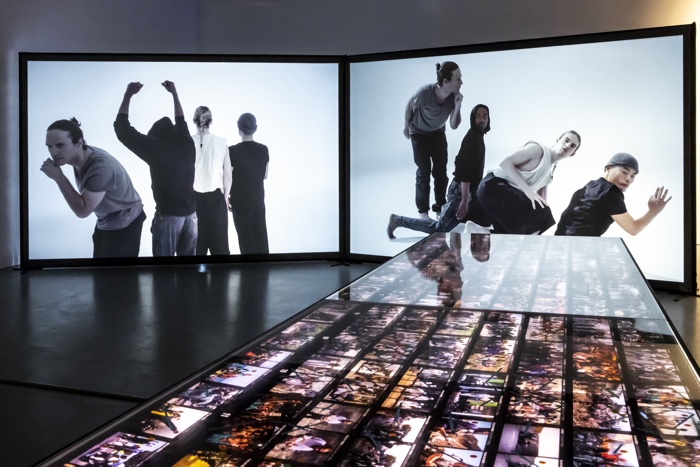
Coralie Vogelaar, Recognized / Not Recognized – A Comparative Movement Analysis of Popular and Unpopular News Images, 2016. The New Newsroom: Reporting Redesigned – MU Eindhoven, 2018. Photo by Hanneke Wetzer
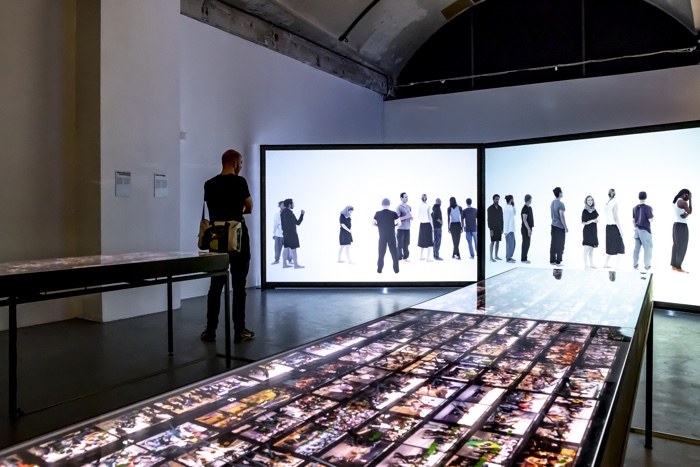
Coralie Vogelaar, Recognized / Not Recognized – A Comparative Movement Analysis of Popular and Unpopular News Images, 2016. The New Newsroom: Reporting Redesigned – MU Eindhoven, 2018. Photo by Hanneke Wetzer
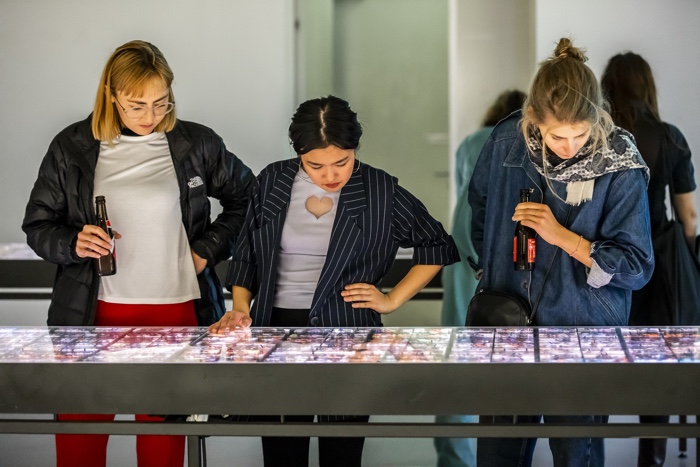
Coralie Vogelaar, Looking for a Possible Algorithm for the Popular News Image, 2016. The New Newsroom: Reporting Redesigned – MU Eindhoven, 2018. Photo by Hanneke Wetzer
Coralie Vogelaar browsed through the databases of the large press agencies for photographs of ten high-profile news events and used search engines to determine how often each image – 850,000 in total – was published online. She then compared the most popular photographs to the least published ones of the exact same situation to figure out what made news agencies favour one over the others. The result, Looking for a Possible Algorithm for the Popular News Image, is puzzling. Each of the iconic photo is brought side by side with its least published “twin” and soon patterns in the focus and composition of the images seem to emerge: babies and tears have to be clearly visible, for example. Gestures well defined and crowd movements easy to interpret.
The artist then attempted to translate these images in Recognized / Not Recognized, a two-channel video installation that reproduces these images in the form of a performance piece created in collaboration with choreographer Marjolein Vogels. Nine dancers move from one frozen position to another: on one screen, they mimic the news photograph that was most popular and on the other, the simultaneously shot but failed image.
Interestingly, the successful images often show people in poses that evoke famous western artworks, such as Michelangelo’s Pietà or Géricault’s The Raft of the Medusa. From a vast ocean of photographic data, we have the tendency to favour images that confirm our visual frame of reference.
Donghwan Kam, After Photography, 2018
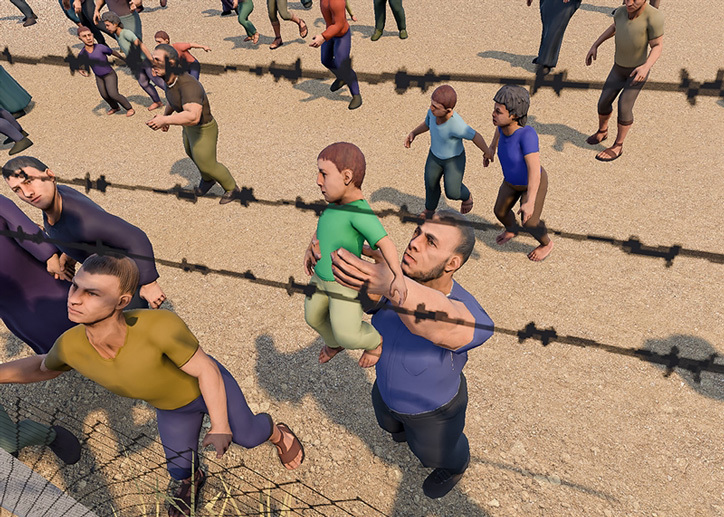
Donghwan Kam, After Photography, 2018
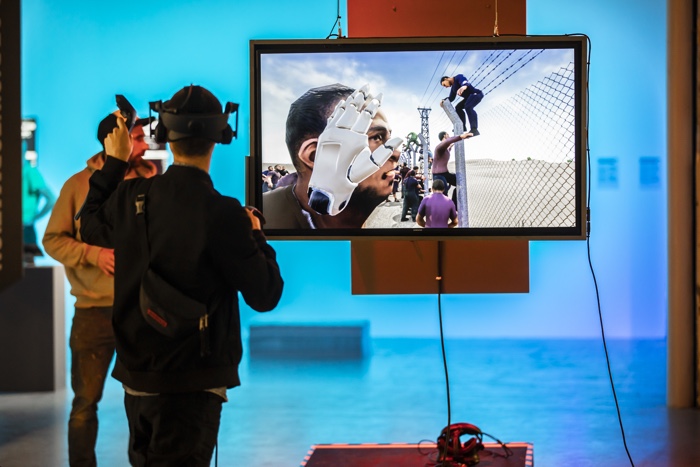
Donghwan Kam, After Photography, 2018. The New Newsroom: Reporting Redesigned – MU Eindhoven, 2018. Photo by Hanneke Wetzer
In After Photography, Donghwan Kam renders iconic news images in 3D and then walks around with his VR headset and a digital point-and-shoot camera he modified to capture the virtual through the use of sensors attached to the front of the device. He thus cuts through the numbness of yet another image of human suffering to create a personal relationship with the event.
Submarine Channel & VPRO, The Industry – Mapping the Dutch Drug Economy (intro), 2017
The Industry, an interactive documentary made by VPRO and Submarine Channel, delves into the drug industry in The Netherlands.
The work interweaves hard facts and figures with personal stories from the people who keep the industry going: housewives, students, dockworkers, weed growers, full-time coke dealers, etc. You can meet the protagonists “on location”: in cannabis plantations hidden in villas, coffeeshop, containers in harbors, etc. Some spaces are real, some are reconstructions based on existing spaces.
Soon enough, you realize that the shady drug world is all around you.
More images from the exhibition:
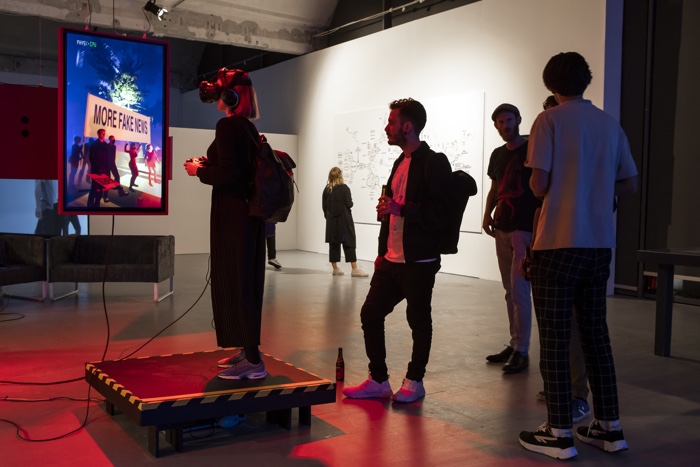
Jim Brady, Mobile Journalism, 2018. The New Newsroom: Reporting Redesigned – MU Eindhoven, 2018. Photo by Hanneke Wetzer
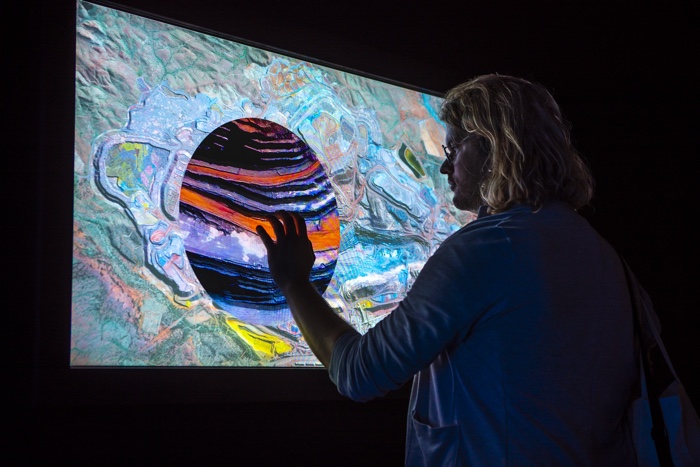
Daan Wubben, In Aerial Times. The New Newsroom: Reporting Redesigned – MU Eindhoven, 2018. Photo by Hanneke Wetzer
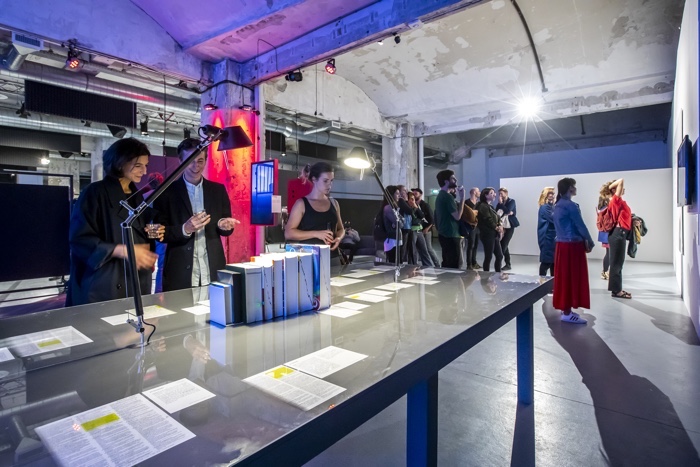
Maxime Benvenuto, Lexicographies of Propaganda and News, 2018. The New Newsroom: Reporting Redesigned – MU Eindhoven, 2018. Photo by Hanneke Wetzer
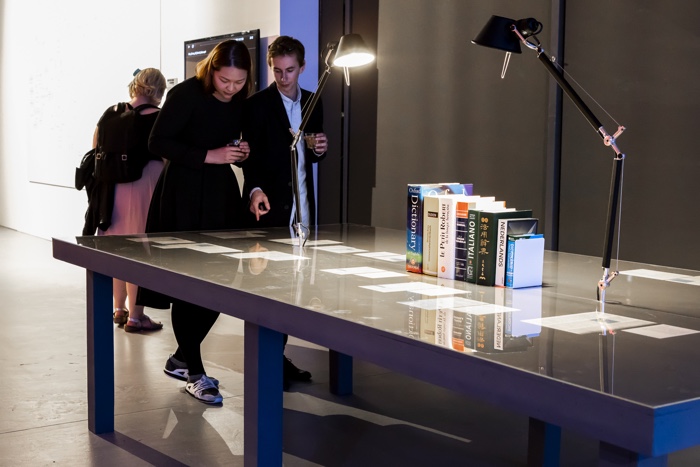
Maxime Benvenuto, Lexicographies of Propaganda and News, 2018. The New Newsroom: Reporting Redesigned – MU Eindhoven, 2018. Photo by Hanneke Wetzer
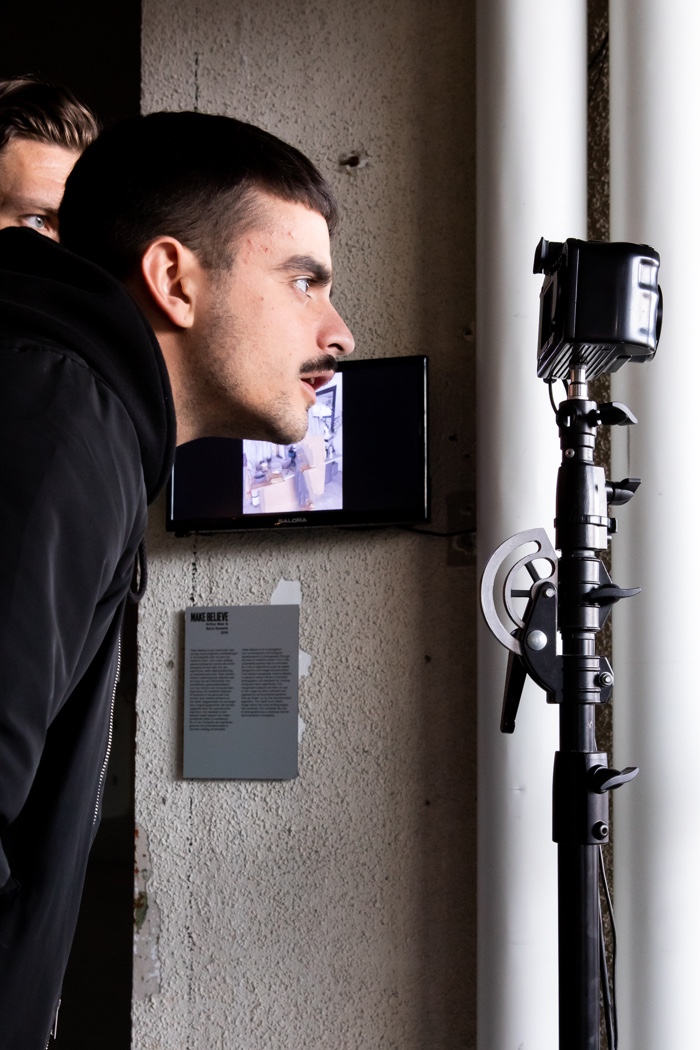
The New Newsroom: Reporting Redesigned – MU Eindhoven, 2018. Photo by Hanneke Wetzer
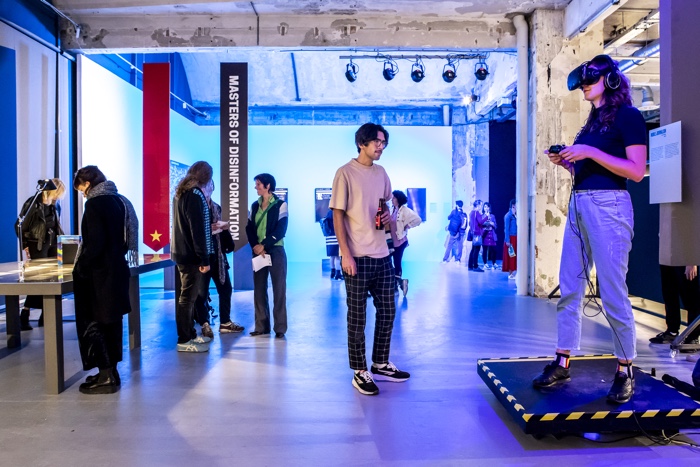
The New Newsroom: Reporting Redesigned – MU Eindhoven, 2018. Photo by Hanneke Wetzer
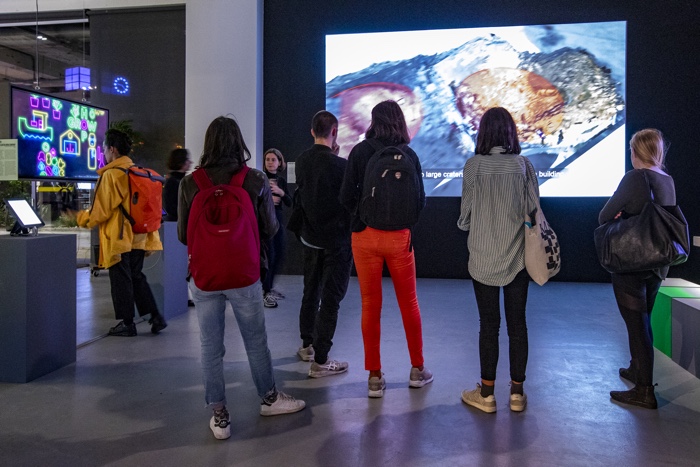
The New Newsroom: Reporting Redesigned – MU Eindhoven, 2018. Photo by Hanneke Wetzer
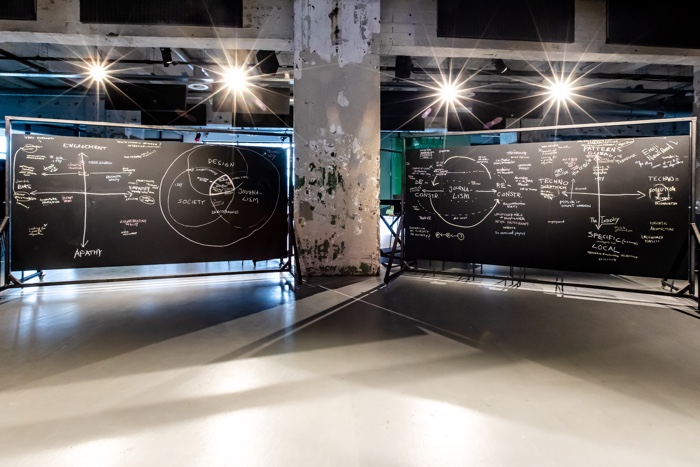
The New Newsroom: Reporting Redesigned – MU Eindhoven, 2018. Photo by Hanneke Wetzer

The New Newsroom: Reporting Redesigned – MU Eindhoven, 2018. Photo by Hanneke Wetzer
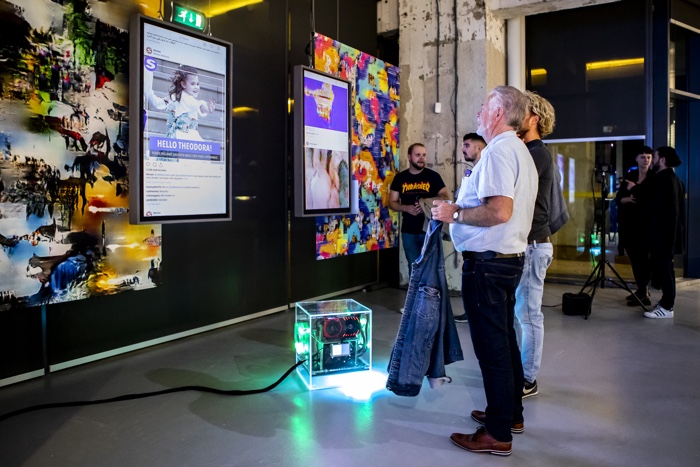
The New Newsroom: Reporting Redesigned – MU Eindhoven, 2018. Photo by Hanneke Wetzer
The New Newsroom: Reporting Redesigned, curated by Nadine Roestenburg & Angelique Spaninks, remains open at MU in Eindhoven until 11 November 2018.
Image on the homepage: Donghwan Kam, After Photography.
